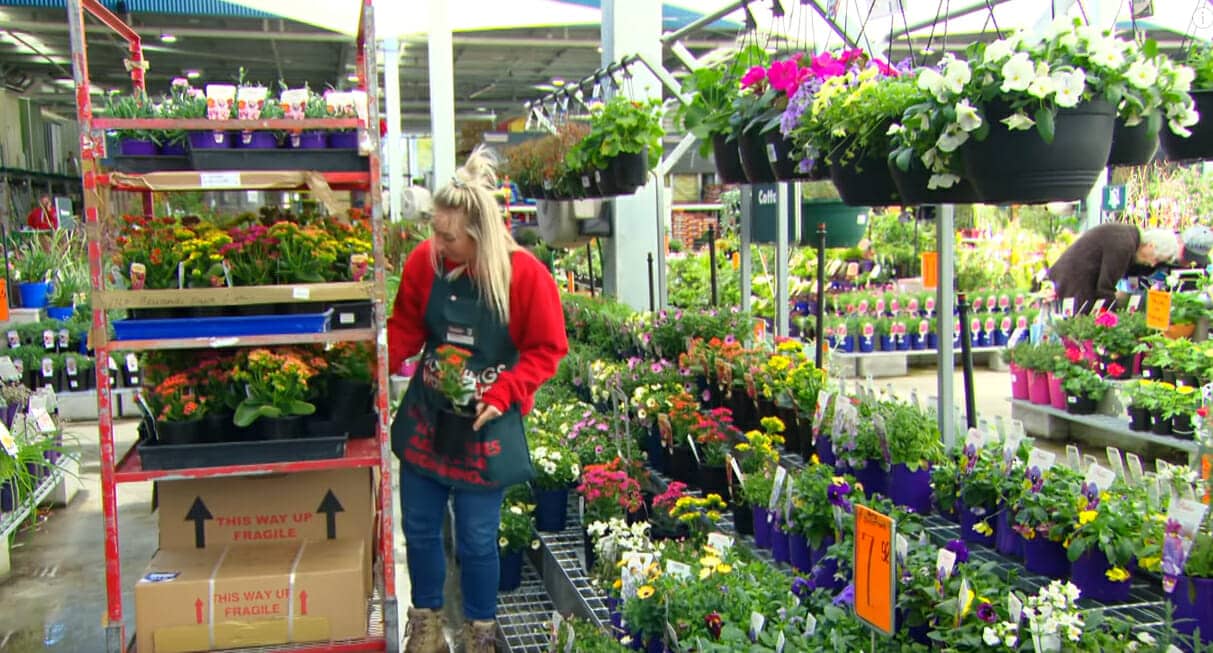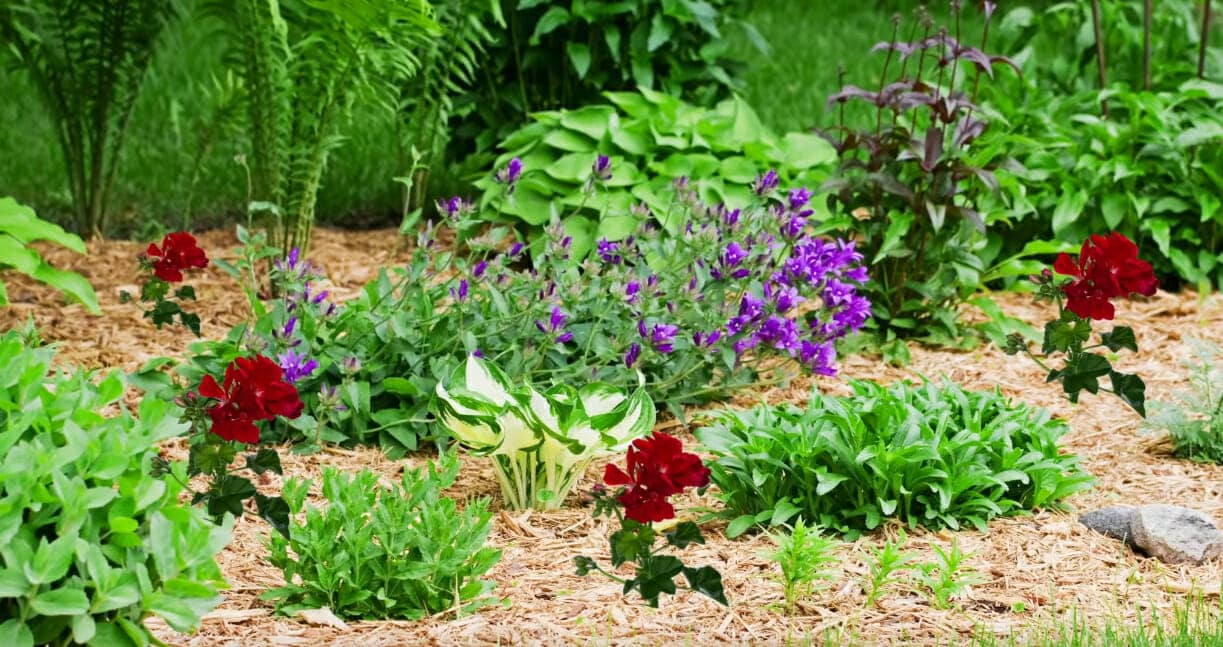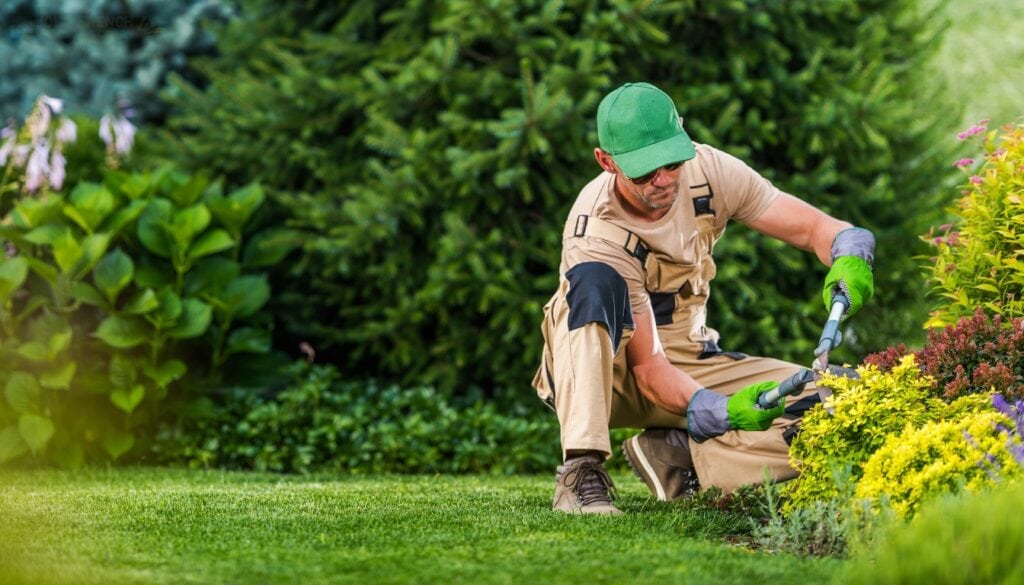Ideas for Low-Maintenance Landscaping
Low-maintenance landscaping refers to a landscape’s design, installation, and maintenance that requires minimal upkeep. This type of landscaping typically uses a combination of hardscaping elements, such as pavers, rocks, retaining walls, and drought-tolerant plant materials. Using mulch and ground cover plants can also help reduce the need for frequent watering and weeding.
Low-maintenance landscaping is becoming increasingly popular due to the many benefits it offers. For homeowners, it can save time and money on maintenance costs and also provide a visually appealing outdoor space. Additionally, low-maintenance landscaping can also help to conserve water and reduce the use of pesticides, making it an environmentally-friendly option. For commercial properties, low-maintenance landscaping can also improve curb appeal and reduce the need for frequent maintenance, which can help to save costs.
Low-maintenance landscaping can be an excellent option for homeowners and commercial properties, providing an attractive outdoor space without constant maintenance. The key takeaways from this article are that low-maintenance landscaping is a design, installation, and maintenance approach that requires minimal upkeep and can save time, money, and resources. It typically uses a combination of hardscaping elements and drought-tolerant plants and helps reduce water, pesticides, and other maintenance costs.

Choosing the Right Plants for a Low-Maintenance Landscape
Drought-tolerant plants, also known as xeriscape plants, are essential to low-maintenance landscaping. These plants can survive in low-water conditions and require minimal irrigation. They are typically characterized by their deep roots, waxy leaves, and small leaves or needles. Examples of drought-tolerant plants include cacti, succulents, and native grasses. These plants are also well adapted to their local environment and can significantly add to a low-maintenance landscape.
Native plants are another essential component of low-maintenance landscaping. These plants are native to the area where they are being planted and are well adapted to the local climate and soil conditions. They are also typically more resistant to pests and disease and require less water, fertilizer, and maintenance than non-native plants. Examples of native plants include wildflowers, shrubs, and trees. These plants can provide a natural look to the garden and also help to attract local wildlife.
Perennials are plants that come back year after year, while annuals are plants that need replanted each year. Perennials are often considered more low-maintenance because they don’t need to be replanted yearly. However, they still require maintenance, such as pruning, dividing, and deadheading. On the other hand, annuals may require more frequent planting, but they also provide a colorful display for a more extended period since they bloom for the whole growing season.
When selecting plants for a low-maintenance landscape, it’s essential to consider the local climate, soil conditions, and light exposure. It’s also necessary to choose plants that are well-suited to the site’s specific needs, such as drought-tolerant plants for dry areas and native plants to particular regions. Additionally, it’s essential to choose plants that will not outgrow the space or require too much pruning, deadheading, or other maintenance. It’s also necessary to select plants that are hardy and disease resistant. Lastly, it’s helpful to consult with a professional landscaper or horticulturist to help select plants that will thrive in your specific area.
Designing a Low-Maintenance Landscape
Mulch is an essential component of low-maintenance landscaping. It helps to retain moisture in the soil, suppress weeds, and reduce the need for frequent watering. Mulch also helps to keep the soil cool and protects the roots of plants from heat. Different types of mulch are available, such as wood chips, bark, and gravel. Each has its benefits and can be used to create other effects in a landscape. It’s essential to select a mulch appropriate for the local climate and the plants growing in the landscape.
Low-maintenance landscaping ideas also often involves planning for efficient irrigation. This can include the use of drought-tolerant plants that require less water, the use of irrigation systems that are designed to conserve water, or the use of rainwater harvesting systems. It’s essential to consider the plants’ specific needs and the local climate when planning for irrigation.
Hardscaping elements, such as pavers, rocks, and retaining walls, can also be used in low-maintenance landscaping. These elements help reduce the need for frequent watering and weeding and provide a durable and attractive surface for foot traffic. Additionally, hardscaping elements can also be used to create different levels in the landscape and to define other areas of the garden.
Raised beds are a great way to create a low-maintenance landscape. They are gardening bed that sits above the ground level and is filled with soil and plants. They are typically made of wood, brick, or stone and can be any shape or size. Raised beds have several advantages when it comes to low-maintenance landscaping.
- Drainage: Raised beds offer improved drainage, which can be especially beneficial in areas prone to flooding or waterlogging. This can help reduce the risk of root rot and other issues caused by poor drainage.
- Soil Quality: Raised beds also allow for better control over the soil quality. Gardeners can fill the beds with a mix of soil, compost, and other materials to provide the best-growing conditions for their plants. This can help to reduce the need for fertilizers and other soil amendments.
- Accessibility: Raised beds also make it easier to access the plants, which can be helpful for those with mobility issues or who have difficulty bending over. This makes it easier to tend to the plants and harvest them.
- Pest Control: Raised beds can also help to keep pests and animals out of the garden. This can be especially helpful in areas where animals like deer or rabbits are known to be a problem.
- Design Flexibility: raised beds also offer a lot of design flexibility; they can be built in any shape or size and can be used to create a variety of different garden styles, such as a vegetable

Maintenance Techniques for a Low-Maintenance Landscape
Proper watering is essential for maintaining a low-maintenance landscape. Overwatering can lead to root rot and other issues, while underwatering can cause plants to wilt and die. The key to proper watering is to provide enough water to keep the soil consistently moist without allowing it to become waterlogged. This can be achieved using a watering schedule, a moisture meter, or a drip irrigation system. Drought-tolerant plants will require less water, but keeping an eye on them during periods of drought or heat waves is essential.
Pruning and trimming are essential maintenance techniques that help keep a neat, low-maintenance landscape. Proper pruning can help to promote healthy growth, reduce the need for staking, and remove dead or diseased wood. Pruning can also help to keep plants in bounds so they don’t outgrow the space. It’s important to prune at the right time, depending on the type of plant, and to use the proper pruning technique to avoid damaging the plant.
Fertilization is another essential maintenance technique that can help to keep a low-maintenance landscape looking healthy and vibrant. Plants require various nutrients to grow, and fertilization can help replenish those nutrients as they are depleted. Organic fertilizers, such as compost or mulch, can improve soil quality and give plants a steady supply of nutrients. It’s essential to use the correct type of fertilizer for the plants and to use it at the right time.
Weeds can be a major problem in any garden, and can quickly take over if not controlled. In a low-maintenance landscape, it’s important to use effective weed control methods that are easy to implement and maintain.
- Mulching: Mulching is one of the most effective ways to control weeds. Mulch is a layer of organic or inorganic material that is placed over the soil surface. It helps to suppress weed growth by blocking light from reaching the soil surface. Organic mulches like wood chips, straws, or leaves are also beneficial for the soil as they decompose, adding organic matter and nutrients.
- Hand Weeding: Regular hand weeding is another effective way to control weeds. This method is best used for small-scale gardens or spot-treating weeds. Removing the entire plant, including the roots, is essential to prevent regrowth.
- Herbicides: Herbicides can also be used to control weeds. These chemicals can be either selective or non-selective and are used to kill weeds. However, it’s essential to be cautious when using herbicides, as they can harm desirable plants.
- Preventative Measures: Preventative measures can also help to reduce weed growth. This can include planting ground covers or other low-growing plants to help shade out weeds or using landscape fabric or other barriers to keep weeds from establishing in the first place.
Overall, in a low-maintenance landscape, it’s important to find a balance between preventing weed growth and controlling it effectively with minimal effort. A combination of mulching, hand weeding, and preventative measures, can help to achieve this balance and keep weeds under control.
Incorporating Low-Maintenance Features in Your Landscaping
Outdoor lighting can be a great addition to a low-maintenance landscape, as it can add beauty and functionality to the space. They can provide subtle and natural lighting that helps extend the use of the outdoor space and increase security and safety. Low-maintenance options for outdoor lighting include solar-powered lights, LED lights, and low-voltage lighting systems. These types of lights require minimal maintenance and can be easily installed and replaced.
Water features, such as fountains, ponds, and waterfalls, can add a sense of tranquility and serenity to a low-maintenance landscape. When choosing a water feature, selecting one that is easy to maintain is essential. For example, a small fountain or birdbath that can be easily cleaned and refilled, or a self-contained pond that has its own filtration system. It’s also essential to choose plants that can thrive in the conditions of the water feature, such as water lilies or other aquatic plants.
Garden furniture can be a great addition to a low-maintenance landscape, providing a place to sit and relax and adding visual interest to the space. When choosing garden furniture, selecting pieces made from durable, low-maintenance materials such as aluminum, teak, or resin wicker is essential. It’s also important to choose pieces that are easy to clean and maintain, such as those that can be easily hosed off or cleaned with a mild detergent.
Fire pits and outdoor fireplaces are popular low-maintenance features that can add warmth, ambiance, and functionality to any outdoor space. They are a great way to extend the use of your outdoor space, allowing you to enjoy it even on cool evenings.
- Fire Pits: Fire pits are typically freestanding structures that can be made of a variety of materials, such as metal, stone, or brick. They can be fueled by wood, natural gas, or propane. They are relatively easy to install and maintain and can be used to create a cozy gathering spot for family and friends.
- Outdoor Fireplaces: Outdoor fireplaces are similar to fire pits but are typically more significant and more permanent structures. They can be built into walls or freestanding and fueled by wood, natural gas, or propane. They can be a focal point of the outdoor living space and provide warmth and ambiance.
- Low-Maintenance: Both fire pits and outdoor fireplaces are relatively low-maintenance features. They can be used with minimal upkeep and typically only require regular cleaning and occasional maintenance. For wood-burning fireplaces, it’s important to keep the chimney clean and in good repair. On the other hand, gas fireplaces only require regular inspection of the gas lines and burners.
- Safety: Fire pits and outdoor fireplaces should be used with safety in mind. It’s essential to keep them away from flammable materials and to have proper ventilation. Following the manufacturer’s instructions and local building codes when installing and using these features is crucial.
Overall, fire pits and outdoor fireplaces are great low-maintenance options for adding warmth, ambiance, and functionality to any outdoor space. They can be used to create a cozy gathering spot and can be enjoyed by family and friends all year round.
Conclusion: Achieving a Beautiful Landscape with Minimal Effort
This article discussed various aspects of low-maintenance landscaping, including the importance of choosing the right plants, designing a low-maintenance landscape, and incorporating low-maintenance features. We also discussed different maintenance techniques, such as weed control and the use of raised beds and fire pits or outdoor fireplaces. The key takeaway is that low-maintenance landscaping is a design, installation, and maintenance approach that requires minimal upkeep and can save time, money, and resources.
Many resources are available for those interested in learning more about low-maintenance landscaping. Some good places to start include gardening books, online forums, and local gardening groups. Some websites like “The Spruce,” “Better Homes and Gardens,” and “HGTV” also have many articles and videos on low-maintenance landscaping. Consulting with a professional landscaper or horticulturist can also be a great way to get personalized advice and guidance for your specific project.
Low-maintenance landscaping is a great way to create a beautiful outdoor space that requires minimal upkeep. It can save time and money and also help to conserve water and reduce the use of pesticides. With proper planning and preparation, creating your low-maintenance landscape can be a fun and rewarding project. The key is to choose the right plants, design a landscape that is easy to maintain, and incorporate low-maintenance features. By following these guidelines, you can create a low-maintenance landscape that you can enjoy for years.
References:
The Benefits of Switching to Low-Maintenance Landscaping
The Benefits of Landscapes
8 Reasons Low Maintenance Landscaping is best for Your Home



